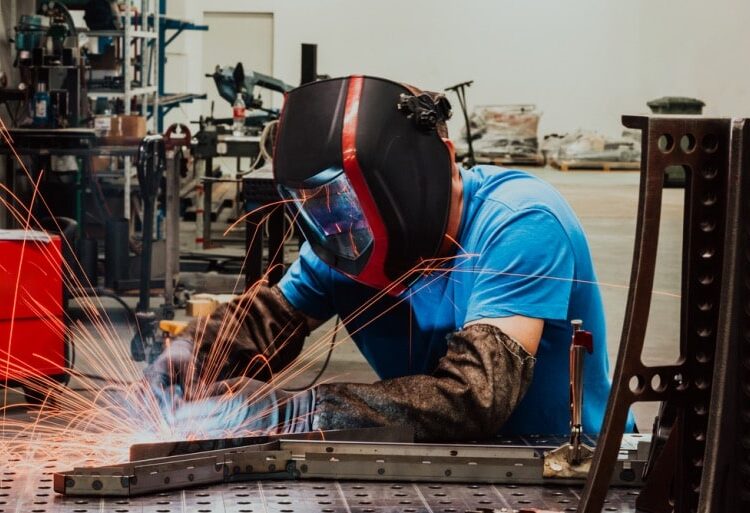Innovative fabrication techniques for custom metal projects include laser cutting, CNC machining, and 3D printing for high precision and efficiency. Waterjet cutting and robotic welding enhance customization and accuracy. These methods allow for complex designs, faster production times, and improved quality, meeting the demands of modern custom metalwork.
The Rise of Modern Fabrication Techniques
The world of metal fabrication has come a long way from its humble beginnings. With modern technologies, metal fabricators can create intricate designs with enhanced precision and efficiency. The industry has undergone a revolution thanks to techniques like laser cutting, waterjet cutting, and CNC machining, which offer various previously unattainable benefits.
These advancements have allowed fabricators to produce complex components more quickly and accurately. Modern fabrication technologies have taken center stage, allowing for more detailed and complex metal works. Implementing these techniques has improved production times and significantly reduced costs by minimizing waste and maximizing material usage.
This evolution in fabrication processes has opened up the automotive, aerospace, and construction industries—all of which rely significantly on metal components—and has created new opportunities due to this change in manufacturing techniques.
Laser Cutting: Precision and Versatility
Using a concentrated laser beam, laser cutting is a precise and adaptable metal production method that creates detailed features and fine edges. It is ideal for projects with tight tolerances and delicate features and is efficient, reducing waste and production time. Companies using laser cutting report increased production speed and reduced labor costs.
The procedure allows the fabricating of intricate forms and patterns using CNC and optics to guide the laser beam. Laser cutting offers a flexible solution for the automotive, aerospace, and electronics sectors because it can be used in various materials, including steel, aluminum, and stainless steel.
Waterjet Cutting: A Cool Alternative
Waterjet cutting is a method that uses high-pressure water and an abrasive substance to cut through metal, making it ideal for materials sensitive to high temperatures. It doesn’t produce heat and maintains the material’s properties. This method offers near-net shape results, reducing secondary machining and saving time and resources.
It’s effective for thick materials that can’t withstand laser heat. Waterjet cutting is versatile and suitable for various materials like metals, ceramics, glass, and composites. It’s a crucial tool for precision and reliability in aerospace, automotive, and manufacturing.
CNC Machining: Precision in Automation
CNC machining is a technology that converts digital designs into exact physical objects, making it ideal for complex designs and repetitive tasks. It ensures consistency and accuracy in metal parts and can work with various metals, making it a versatile option for custom projects. In several sectors, using CNC machines has resulted in a notable 20% reduction in human error and a 20% boost in production efficiency.
The aerospace, medical, and automotive sectors like it because of its capacity to create components with precise tolerances and complex geometries. Advances in CNC technology, such as multi-axis machining and high-speed milling, further expand its capabilities.
Factors to Consider When Choosing a Fabrication Technique
The choice of fabrication method for a custom metal project depends on factors such as material type, project budget, and design complexity. Each technique has advantages and limitations, such as laser cutting providing high precision but unsuitable for thicker materials. Evaluating these factors helps select the most suitable fabrication technique that meets project specifications and goals.
Material type compatibility is crucial, as some metals may be more appropriate for laser cutting, while others may require waterjet cutting’s cold cutting advantages. Budget considerations are also important, as different techniques have varying equipment, tooling, and labor costs. Evaluating design complexity helps manufacturers make informed decisions that optimize efficiency and quality in their custom metal projects.
Applications and Real-world Examples
Modern fabrication techniques are widely used in various industries, such as automotive and aerospace, to achieve high precision and consistency in engine components. CNC machining is used in automotive to produce complex parts with tight tolerances, while laser cutting is used in aerospace to create lightweight structural components without compromising strength.
These techniques are crucial for making intricate designs that meet stringent aerospace industry requirements. Advanced techniques like waterjet cutting and CNC machining are used in the medical sector to produce surgical instruments, implants, and medical devices with unparalleled precision. By adopting modern fabrication technologies, industries can improve efficiency, quality, and innovation.
Future Trends in Metal Fabrication
The metal fabrication industry is set for a future of limitless possibilities and innovation due to technological advancements. Additive manufacturing (3D printing) and hybrid manufacturing techniques are expected to enhance the flexibility and efficiency of custom metal projects. Additive manufacturing allows for complex geometries and structures, while 3D printing reduces material waste and offers design freedom.
Hybrid manufacturing combines additive and subtractive processes, enabling high-precision components with unique geometries. It is also anticipated that the sector will undergo a revolution by integrating AI and machine learning into the manufacturing process, which will optimize design and production workflows, cut lead times, and boost overall productivity.
Conclusion
Modern fabrication techniques like laser cutting, waterjet cutting, and CNC machining have significantly improved custom metal projects’ efficiency, quality, and cost-effectiveness. These techniques offer creative possibilities and increased productivity, making them ideal for aerospace applications and medical devices.
Staying informed about these technologies helps businesses and individuals make informed decisions, ensuring high-quality and efficient projects. By embracing these technologies, manufacturers can unlock new opportunities for innovation and success in their respective industries.




